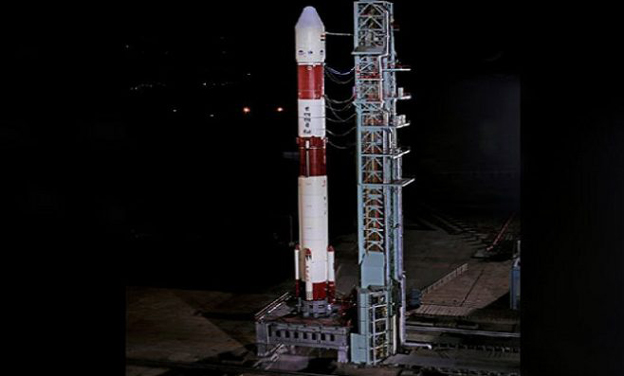The 25-hour countdown for the launch of RISAT-2B, a radar imaging earth observation satellite using PSLV-C46, began at 0430 hrs on Tuesday morning in the spaceport of Sriharikota, about 80 km from here. Indian Space Research Organisation (ISRO) sources said the launch would take place from the First Launch Pad at 0530 hrs early on Wednesday morning.
About 15 minutes after lift off, the 300 kg RISAT-2B will be placed into an orbit of 555 km at an inclination of 37 deg to the equator. Earlier, the Mission Readiness Review Committee met at SDSC and after the Launch Authorisation Board gave its clearance, the countdown commenced, during which propellant filling operations would be taken up in the four-stage 44.4 metre tall vehicle. RISAT-2B is the fourth flight unit of the RISAT programme and it would be used for reconnaissance, strategic surveillance and disaster management.
It uses an active SAR (Synthetic Aperture Radar) imager to provide continuity of service for RISAT-2. The launch of RISAT-2B will also mark resumption of a vital ring of Indian all-seeing radar imaging satellites after seven years. The sources said that when it was cloudy or dark, ‘regular’ remote sensing or optical imaging satellites, which work like a light-dependent camera, could not perceive hidden or surreptitious objects on the ground.
Satellites that were equipped with an active sensor, the SAR could sense or ‘observe’ Earth in a special way from space day and night, rain or cloud. This all-weather seeing feature is what makes them special for security forces and disaster relief agencies.
The Indian space agency was planning to launch at least six such satellites in the near future to add to the reconnaissance capability from about 500 km in space, a constellation of such space-based radars means a comprehensive vigil over the country. RISAT-2B would be followed by RISAT-2BR1, 2BR2, RISAT-1A, 1B, 2A.




